Death Positivity in Videogames

This article was written by Gabby DaRienzo and originally published on Medium.
It was brought to us by our friends at Critical Distance, who find the best in critical writing about games each week. You can see more at their site, and support them on Patreon.
///
When Maxis’ simulation game The Sims launched in 2000, my friends and I (aged 10) quickly became obsessed with it, spending hours in the game customizing Sim-versions of ourselves, building elaborate homes for them, and watching their lives play out. But although the game featured many innovative gameplay mechanics for its time, my friends and I were specifically interested in one particular feature: your Sims could die.
At first it was a tragic and heart-breaking discovery, but very soon afterwards we were excitedly creating horrible and tragic deaths for said Sims.
While our parents were disturbed by our morbid fascinations with killing off each others’ Sim lookalikes, my friends and I were excited about the game’s death mechanics. The Sims dealt with death in a much different way from most other games we were playing at the time?—?even though those games also included death and dying?—?and it not only encouraged us to think about death in videogames, it also gave us the opportunity to come to terms with our own mortalities.
Death serves multiple mechanical roles in videogames— it is most commonly used as a thing you want to avoid, a goal you need to accomplish, or as a narrative device. While death is prominent in many videogames, we generally give it much less thought and treat it with much less seriousness than actual death, especially when it comes to the player.
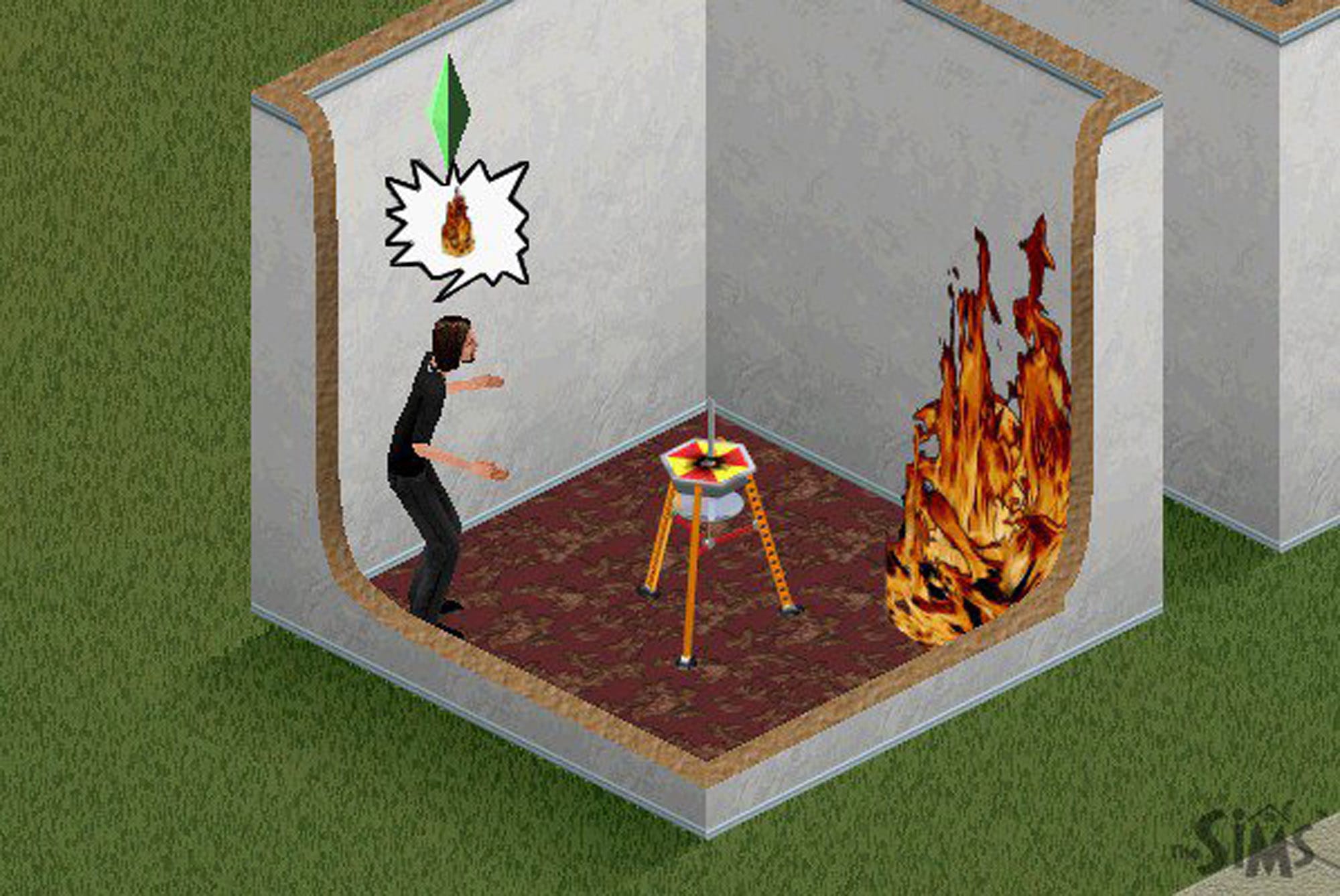
This could be from a lack of permanence in most videogames: with mechanics like life-systems (think Super Mario) and respawning (think Halo), a player’s death in a video game becomes meaningless?—?a device that serves more as an interruption or annoyance rather than the actual consequences of death. This is why myself (and others) were fascinated with killing off our Sims?—?their deaths were permanent, they meant something, and that directly affected the gameplay of The Sims.
Their deaths were permanent, they meant something, and that directly affected the gameplay…
There’s a relatively new movement that’s slowly gaining popularity called death positivity (or “death acceptance”) that is encouraging people to face their own mortalities and to be open to talking about death, addressing it, and demystifying it. The movement was started by a group of young morticians whose goal is to lift the veil on death, and encourage us to explore our thoughts, feelings, and fears about mortality.
I’ve been absolutely fascinated with the subject lately, but particularly how it relates to videogames. In a sea of videogames with tired death mechanics, it’s interesting to look at what games are using death differently and how that is allowing players to really think about and come to terms with their own mortalities.
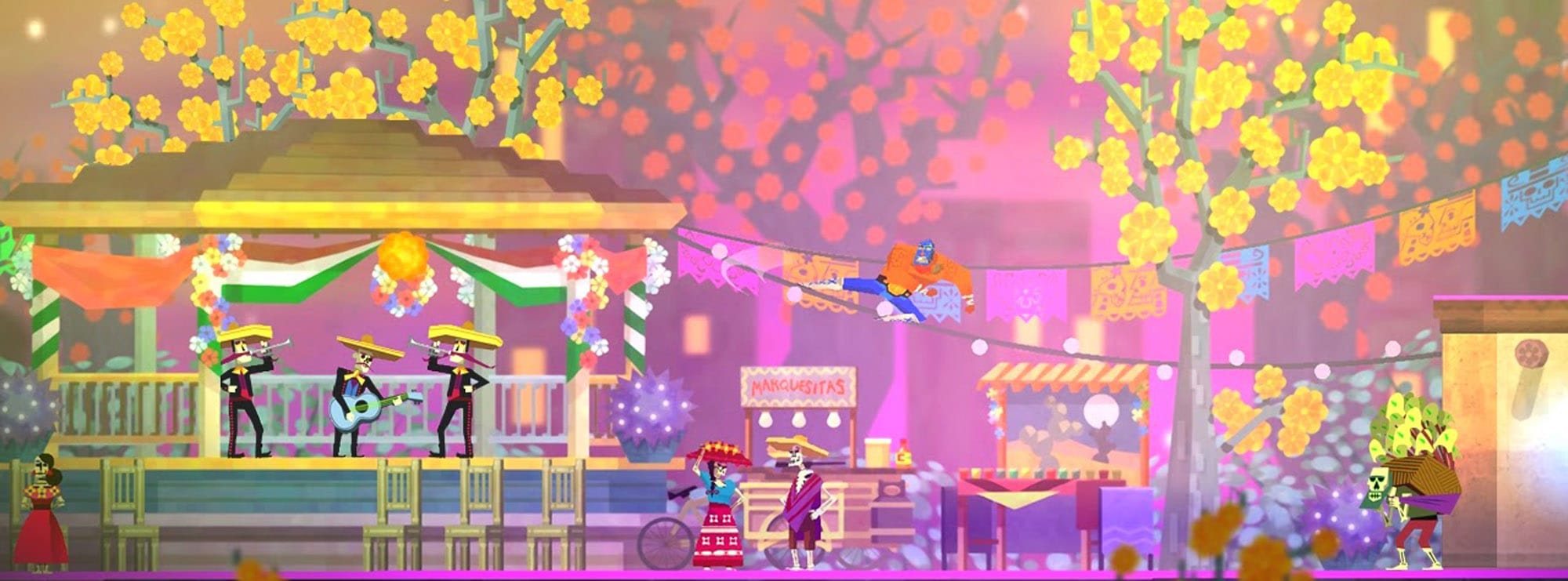
Guacamelee! Super Turbo Championship Edition (DrinkBox Studios, 2014)
Guacamelee! is a rare game that not only shows death and the afterlife in a positive way, but does so beautifully and hilariously. Guacamelee! is an action-platformer game developed in 2013 by DrinkBox Studios that is heavily inspired by Mexican culture and folklore, and features a cast mostly made up of skeletal calaca figures. The game stars Juan, a farmer-turned-luchador who must save his love interest and El Presidente’s daughter from an evil charro skeleton.
Midway-through Guacamelee!, Juan unlocks the ability to teleport between the world of the living and the world of the dead, which allows him to solve puzzles or fight specific enemies. The act of teleporting between these two worlds is also quite aesthetically pleasing?—?each time you teleport to the dead world the music changes to a gorgeous ethereal version of the living world’s music. The scenery in the world of the dead mirrors that of the living world, often with extra subtle details like decorations or internet memes (the game is famous for being chock-full of them).

The world of the living and the world of the dead?—?Guacamelee! (DrinkBox Studios, 2013)
There are many towns and villages in Guacamelee! filled with friendly non-playable characters (also referred to as NPC’s). Shifting from the world of the living to the world of the dead reveals the animated skeletons of deceased citizens of these towns and villages, who are often more energetic and alive than the living citizens.
Although Guacamelee! features classic death tropes (Juan has a health bar and respawns after he dies) the mechanic of shifting between the world of the living and world of the dead, and showcasing death and the afterlife in a beautiful and colorful way, makes Guacamelee! a truly great example of a death positive video game.
Another death positive game that is also heavily influenced by Mexican culture and folklore (and also is peppered with hilarious dialogue) is Grim Fandango, which was originally developed in 1998 by LucasArts and recently remastered and rereleased this year by Double Fine. I highly recommend downloading both Guacamelee! and Grim Fandango if you’re looking for games on the subject of death that are both beautiful and hilarious.
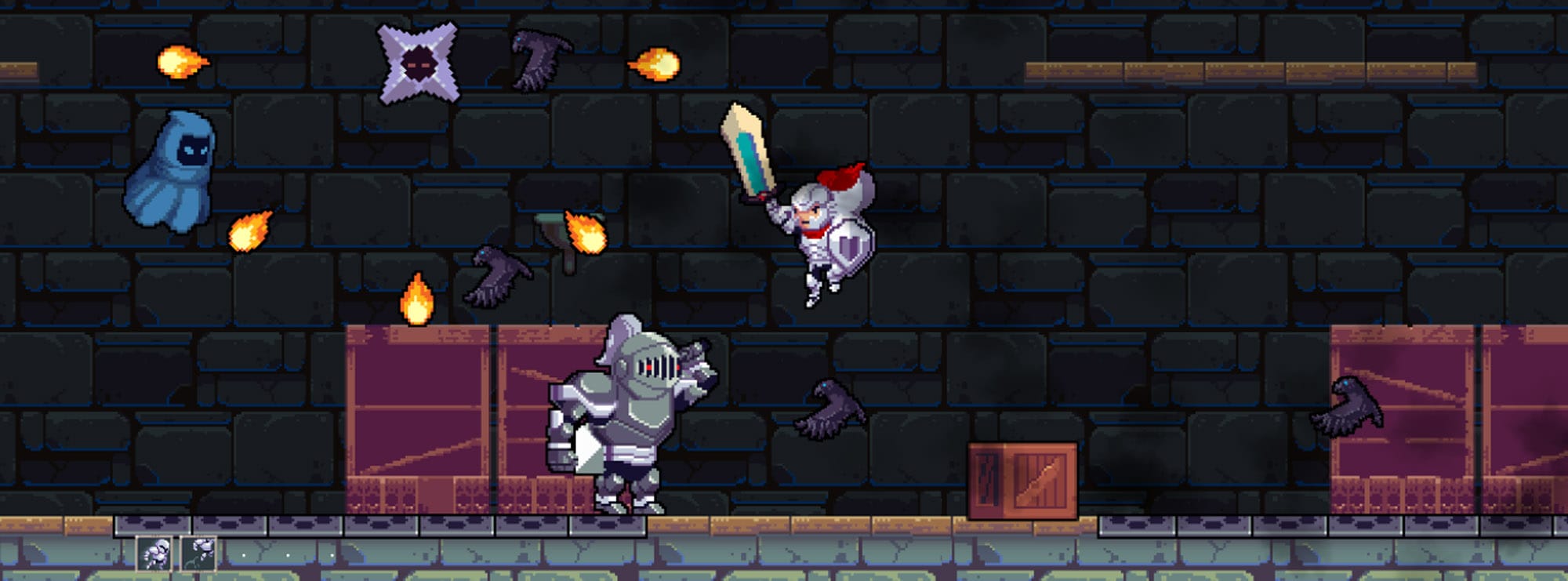
Rogue Legacy (Cellar Door Games, 2013)
A game that shows death in a less colorful and friendly way, but makes up for it with fantastic gameplay and death mechanics is Rogue Legacy, a platformer with Roguelike elements developed in 2013 by Cellar Door Games.
In Rogue Legacy the player must explore randomly generated dungeons and fight off randomly spawned enemies. The game uses permadeath (or “permanent death”) so when your character dies, they’re gone for good. However, after your original character has died, the game allows you to play as one of their heirs. These descendants each have unique characteristics and abilities that affect the gameplay?—?for example, if your descendant has color-blindness the game will be presented in black and white. Gold you’ve collected during the run with your original character has been passed down to these heirs, and can be used to improve the abilities of any successive decendants.
allowing the player to acknowledge and accept the deaths of their unique characters, and continue
This unique mechanic makes Rogue Legacy not only an incredibly inventive game, but also a death positive one at that?—?allowing the player to acknowledge and accept the deaths of their unique characters, and continue to adventure with their heirs and descendants, who will also inevitably die.
Other games I consider to be death positive that are similar to Rogue Legacy are Spelunky, a platformer game developed by Derek Yu originally in 2008, and Don’t Starve, a survival action-adventure game developed in 2013 by Klei. I highly recommend downloading all three of these games if you’re interested in randomly-generated levels and games with permanent death.
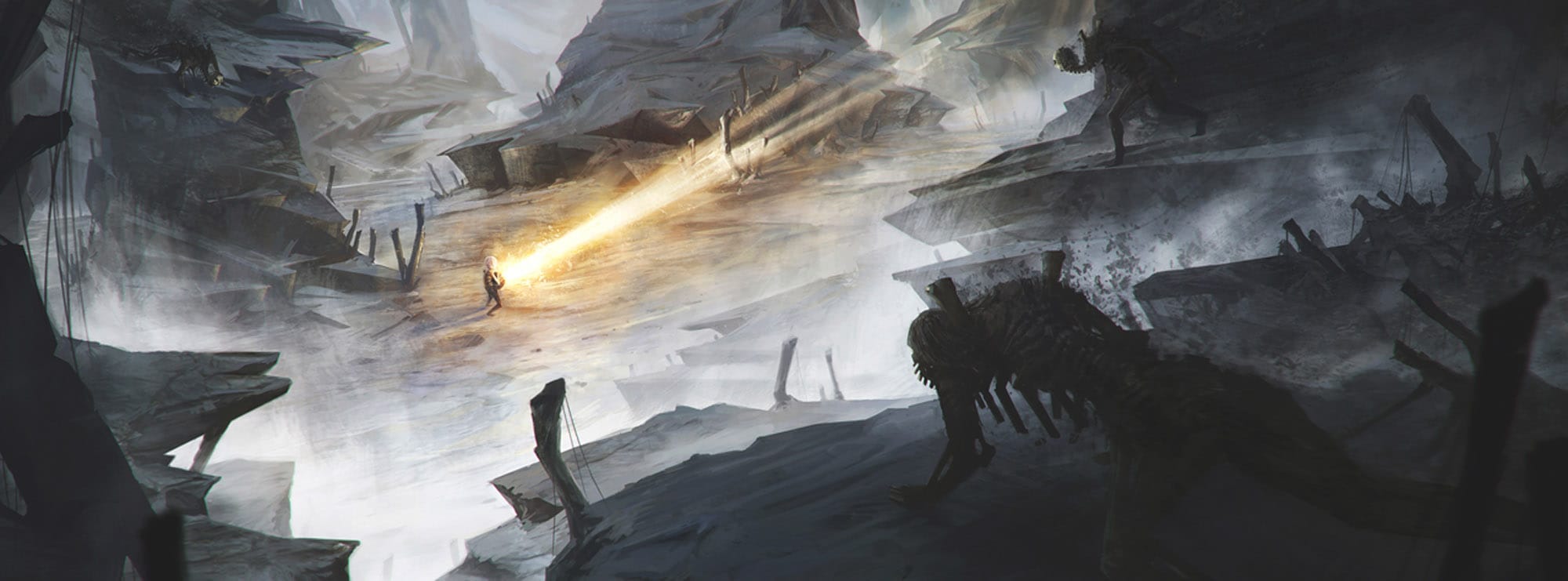
An upcoming game that’s aiming to use permadeath in a very real and exciting way is The Flock, which is currently being developed by indie studio Vogelsap and is launching this Friday, August 21st. The Flock is a multiplayer horror game you play online with your friends, however the developer has promised that after 215,358,979 player deaths the game will purposefully go offline forever.
The Flock was designed with a limited population in mind, so the in-game deaths are meant to reflect the actual deaths of an actual population?—?in this case, the population of the Flock. According to the developer’s FAQ:
“If this were the real world it would mean the Flock is a tragic race doomed to extinction. We want to convey that story into our multiplayer.”
This is an incredibly exciting mechanic that really and truly conveys the consequences of actual death. The Flock’s permanent death?—?not only of the in-game characters but of the game itself?—?is getting people talking and discussing death in video games, and that in and of itself makes The Flock a shining example of a death positive videogame.
///
Games like Guacamelee!, Rogue Legacy, and The Flock give me hope that videogame developers can use death in creative and mechanically interesting ways, that stray from typical and tired tropes, and give players the opportunity to think about death and possibly even come to terms with their own mortalities. I’m genuinely looking forward to the future of “death” in the games industry, and hope to see other developers use it in unique and interesting ways too.
There are actually quite a lot of death positive videogames I could go on and on about?—?games that really broach the subject of death in mechanically or narratively interesting ways. Here’s a short and summarized list of other games I consider to be death positive that I highly recommend checking out:
- Sunburn! developed by Secret Crush in 2014 is a mobile puzzle game in which you play a captain of a space vessel that has crashed. Knowing that you and your crew are all doomed, your goal is to gather your crew and to plummet into the sun, dying together.
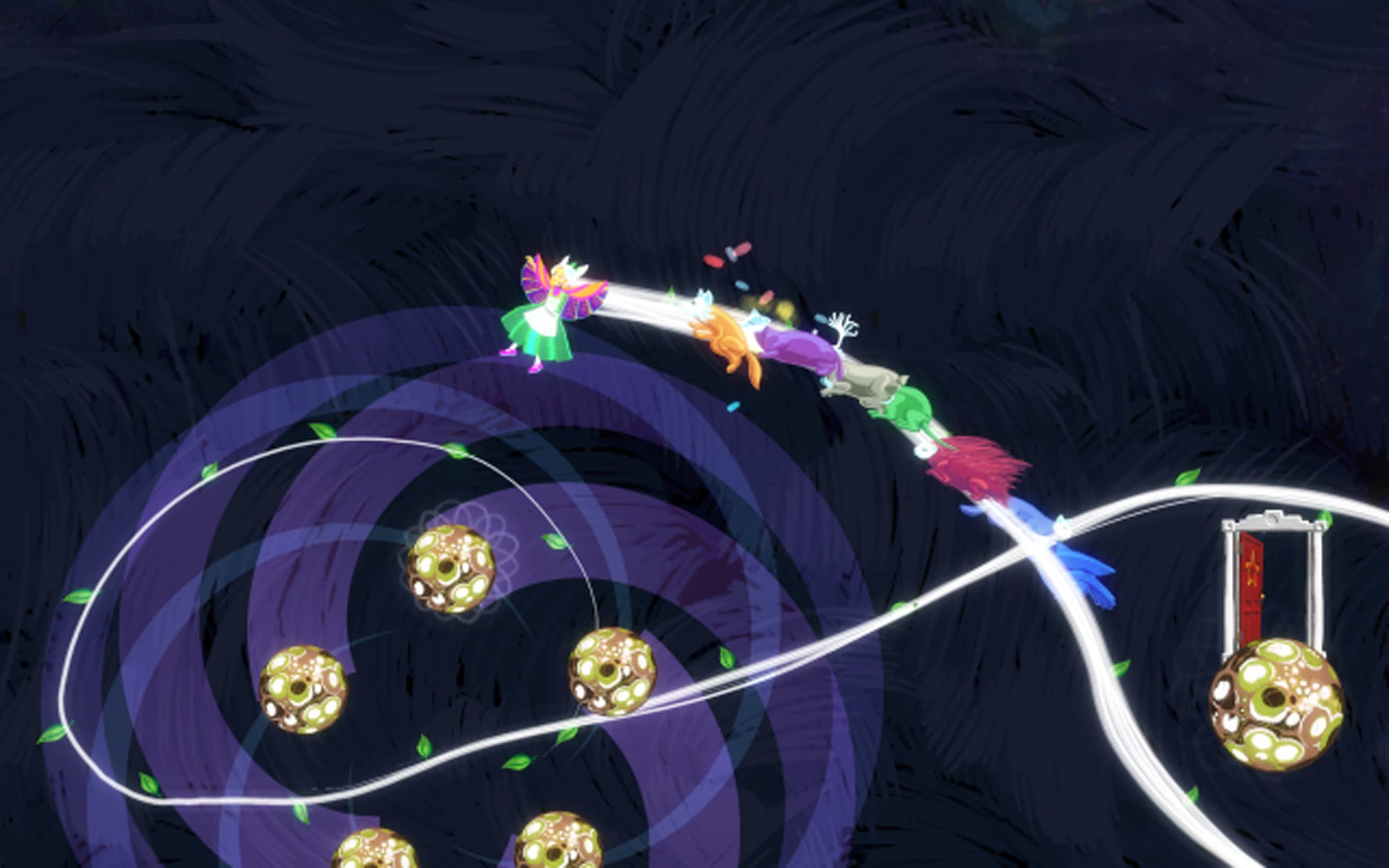
- Gravity Ghost developed by Ivy Games in 2015 is a physics-based puzzle game in which you play the ghost of a young girl, reuniting animal spirits with their physical bodies and uncovering the story of your death and the deaths of the animals you’re helping.
- Legend of Zelda: Majora’s Mask developed in 2000 by Nintendo is arguably the darkest game in the Legend of Zelda series, with the subject of death and doom being central to the gameplay and narrative. You play a child version of the main character Link, who must repeatedly travel through time and use transformative masks to solve puzzles and stop the moon from crashing into the earth.
- American McGee’s: Alice developed in 2000 by Rouge Entertainment is a psychological horror action game based off Lewis Carroll’s Alice novels. The game stars an adult version of Alice who, after witnessing the gruesome death of her family and after an attempted suicide, regresses back to Wonderland?—?which has now been transformed into a dark and macabre world based off of Alice’s traumas and the state of her mental health.
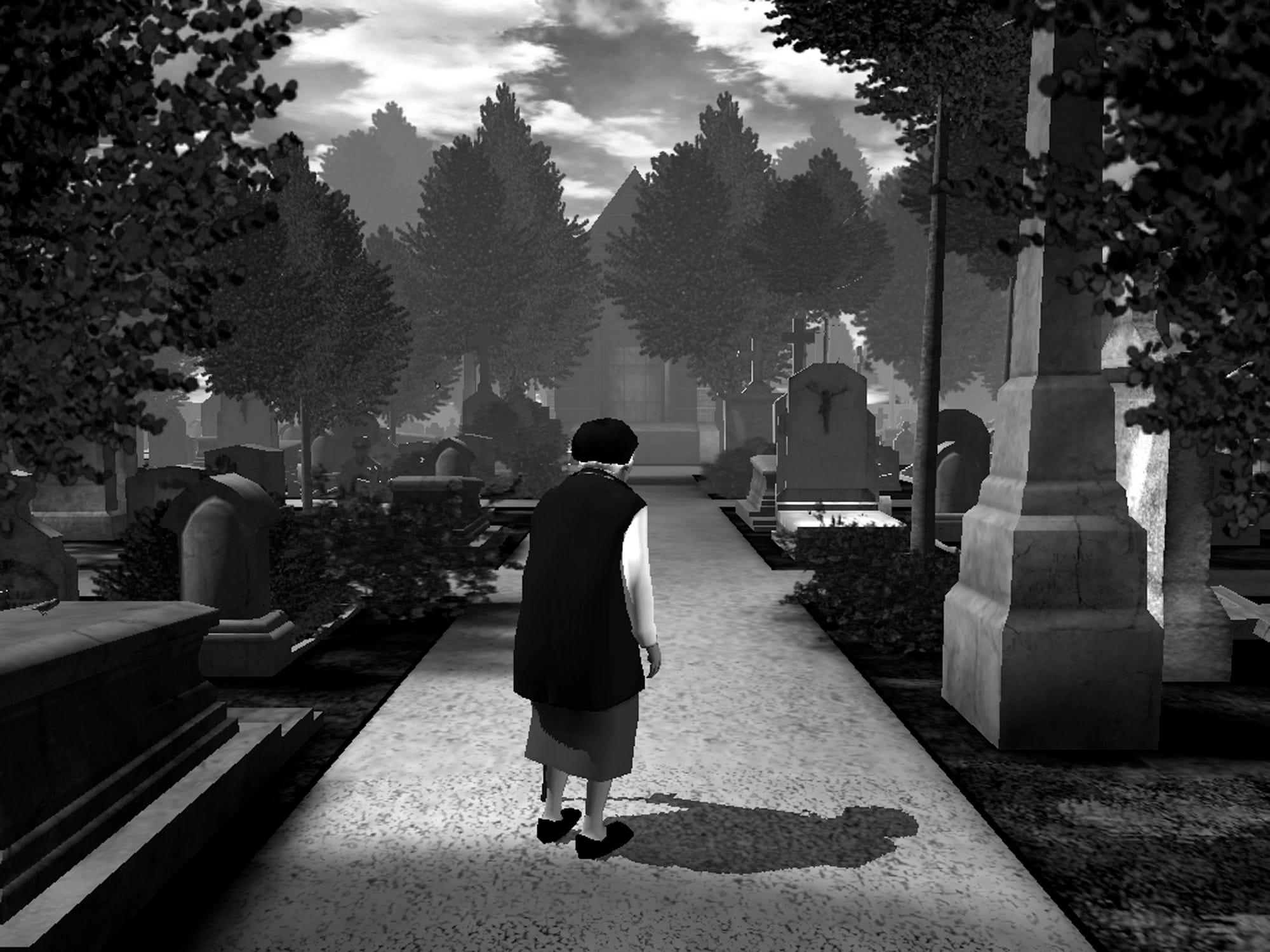
- The Graveyard is a game developed by Tale of Tales in 2008, where the player assumes control of an elderly woman walking through a graveyard to a bench. The game is slow and beautiful and easily one of the best examples of a death positive videogame.
- Fate Tectonics is an upcoming world-building strategy puzzle game by Golden Gear Games which is launching September 9th. The player can build up a world and attempt to appease the gods, but also has the ability to destroy said world. There is no death or “game over” state but rather pieces that fall go back to “the void”?—?a place where your world starts and where it ends: both life and death.
- The Mass Effect series, developed between 2007–2012 by BioWare, is a game series where the player takes control of Commander Shepherd, captain of a space ship and crew, and must make decisions that drastically alter the gameplay. Supporting characters can permanently die in the game, which not only affects each individual game in the series but also the subsequent sequels and their narratives too.
I’m absolutely positive I’ve missed a few examples of death positive videogames, so if you can think of any that I’ve missed or if you’d like to share your thoughts on death and videogames, please hit me up on twitter!
///This article was written by Gabby DaRienzo and originally published on Medium.
It was brought to us by our friends at Critical Distance, who find the best in critical writing about games each week. You can see more at their site, and support them on Patreon.



